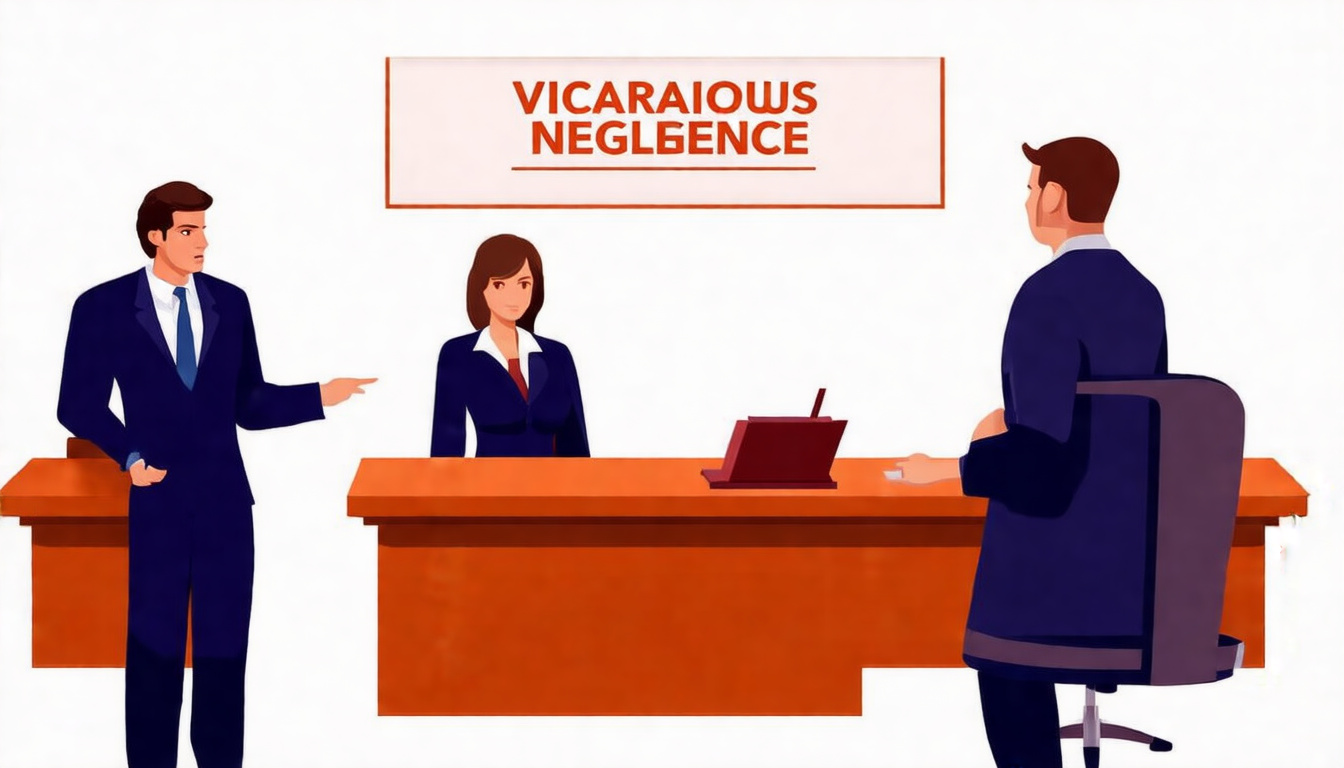Vicarious negligence matters in tort law. It links one party to another’s carelessness. With an employer and employee pair, one wrong connects to the other. This idea guides both employers and workers when harm occurs. This article explores the legal links of vicarious negligence, gives clear examples, and shows the doctrine in action.
What is Vicarious Negligence?
Vicarious negligence ties an employer to an employee’s carelessness. One party answers for the other’s fault. In this view, the connection between employer and worker makes up the blame. Unlike direct fault—where one person is to blame—this link assigns liability because of who is connected. Employers control workers. Because of that control, they must ensure care in action.
Legal Foundations of Vicarious Negligence
The French term respondeat superior means "let the master answer." Here, the employer must answer for the worker’s wrongs when the work is in context. To link blame, certain points stand:
- Existence of a clear relationship between employer and worker.
- The careless act must fall within the worker’s job.
- The act of carelessness must cause harm.
If these links are strong, the employer may bear the cost even without a direct wrong.
Examples of Vicarious Negligence in Practice
Examples help show these links. Consider these cases:
1. Employer Liability for Employee Car Accidents
A delivery driver causes a car crash when making a work run. The driver acts carelessly, yet the wrong links to the employer. The employer connects to the act since it occurs on the job. This link gives victims a way to recover damages.
2. Medical Staff and Hospital Liability
A hospital links to its staff’s acts. When a nurse gives wrong medicine and harms a patient, the hospital answers. The nurse’s act, done at work, ties back to the hospital.
3. Retail Store and Employee Negligence
At a retail shop, a cashier spills liquid and does not clean it. A customer slips and falls. The store links its liability to the cashier’s carelessness during work.
Distinguishing Vicarious Negligence from Direct Negligence
The link in vicarious negligence travels through a relationship. Direct negligence links a person straight to their fault. For example:
- Direct negligence: An employer fails to fix dangerous equipment, and an injury happens.
- Vicarious negligence: A worker carelessly hurts a customer, and the employer answers for that act.
This link matters in court. It lets victims pursue claims against employers who hold deeper funds or better insurance.
Limitations and Defenses Against Vicarious Negligence
Liability does not attach to every careless act. The link depends on the work connection. Some points break the link:
- Acts outside the work role. If a worker acts on personal whim—a frolic or detour—the link may break.
- Independent contractors stand apart. Employers rarely link to their mistakes.
- No clear relationship. Without a direct work tie, the link fades.
These limits share responsibility fairly and keep extra burdens at bay.
How Courts Evaluate Vicarious Negligence Claims
When courts see a claim, they check:
- The nature of the tie between the parties.
- Whether the careless act falls within the job.
- Whether the act helps the employer, even in small ways.
Different courts might weigh these links in varying ways, but the core checks stay the same.
Why Understanding Vicarious Negligence Matters
Knowing these links matters for many reasons:
- Employers build better safety plans.
- Employees learn their roles and risks.
- Injured people know whom to hold.
- Legal experts apply clear links in the law.
Employers must invest in safe work and watch over workers. Knowing these links gives victims a fair shot at getting compensation.

Summary: Key Points of Vicarious Negligence
To cap the discussion, see these core points:
- Vicarious negligence links an employer or principal to the carelessness of an employee within work duties.
- The rule stands on the phrase respondeat superior.
- The worker’s act must tie to job tasks.
- Employers usually do not answer for acts outside the work scope or those by independent contractors.
- The idea pushes for proper supervision and safe work.
Frequently Asked Questions (FAQ)
Q1: What is the difference between vicarious negligence and vicarious liability?
A: Vicarious negligence links blame for carelessness through connection. Vicarious liability is a broader term that covers many wrongs. Still, the terms often match in tort law.
Q2: Does vicarious negligence apply if the worker acts outside work hours?
A: No. The link lasts only when the act fits within the job. Acts outside work usually break the connection.
Q3: Can a company answer for an independent contractor’s carelessness?
A: Typically, no. Independent contractors stand on their own. However, if the company controls the work closely, the link may form (source: Cornell Law School).
Conclusion: Take Control of Liability with Vicarious Negligence Insights
Vicarious negligence serves as a vital link in tort law. It connects employers to worker carelessness in fair ways. Recognizing when these links hold helps protect businesses and ensures fairness for injured parties. Employers, workers, and legal experts can use these insights to reduce risk and handle claims rightly.
Take a step now: talk to a qualified legal professional to check your specific links and risks. Stay informed and act with care to reduce costly errors.
Author: Doyle Weaver, Attorney at Law
Home | Estate Planning | Personal Injury | Hill Country Lawyer | Terms of Service | Privacy Policy
© 2025 Digital Law Firm, P.C.
Disclaimer: The content provided in this blog is for educational and informational purposes only. It is not intended to constitute legal advice or establish an attorney-client relationship. The information presented does not address individual circumstances and should not be relied upon as a substitute for professional legal counsel. Always consult a qualified attorney for advice regarding your specific legal situation. The author and publisher are not liable for any actions taken based on the content of this blog.

Leave a Reply